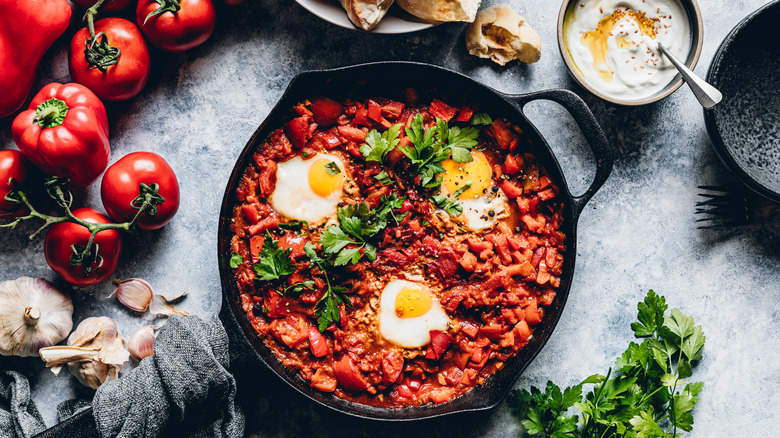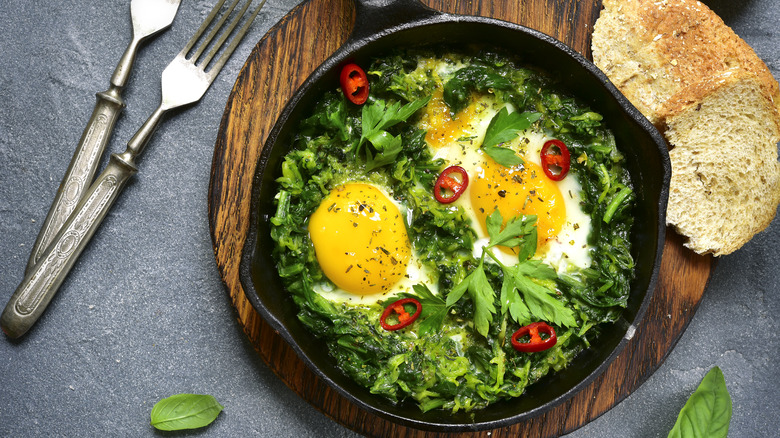How You Should Be Adding Eggs When Cooking Shakshuka
As far as delightful wakeup calls go, dipping into hot shakshuka, a spicy, aromatic blend of stewed vegetables and eggs, is as good as it gets. The stew element of the shakshuka is fairly straightforward, as tomatoes, peppers, and other ingredients simmer into a thick, savory sauce. However, the eggs are a different story.
Creamy, just-set whites and silky flowing egg yolks — it's the gold standard for your shakshuka eggs because you want to be able to scramble your rich and runny yolks into the toasty surrounding sauce. But achieving that texture is easier said than done. Still, with a little guidance, you can get your eggs to this level of perfection. While much is dependent on the timing and placement of your eggs, there's one secret way to make sure that they cook to this golden standard: spooning the thick sauce onto the egg whites so that they cook faster than the yolks. So how do you pull this eggy magic trick off?
Pivot to the divot
First, you'll make a proper divot in your sauce, nestling one or two eggs per divot depending on how many eggs you want to have for each serving. Once you've gently placed your eggs into the select pockets, you'll need to complete the main game changer of scooping a bit of the thick sauce onto the egg whites, being careful to avoid heaping any sauce onto the yolks.
With this done, you can now steam or simmer your shakshuka on the stove top or broil it in the oven. You'll want to take it off the heat just when the egg whites are set, when they're glossy but have slight movement. This can take anywhere from five to eight minutes, depending on the heat level and amount of eggs you're cooking. If broiling, be sure to keep an eye on the dish, as the eggs can go from runny to chunky in a flash.

